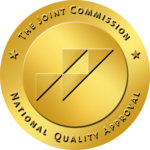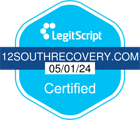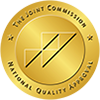Finding effective mental health treatment can feel overwhelming, especially when traditional approaches don’t seem to work. Transcranial Magnetic Stimulation (TMS) is changing the game by offering a modern, low-risk alternative. This FDA-approved therapy has been making a real difference for people dealing with depression and anxiety. TMS is non-invasive, focuses directly on specific areas of the brain, and provides a safe option for those looking for something different than medications or talk therapy.

What Is TMS?
Transcranial Magnetic Stimulation, or TMS, is a cutting-edge therapy designed to improve brain function in individuals experiencing mental health challenges. Unlike medications that affect the entire body, TMS specifically targets underactive areas of the brain associated with depression and anxiety. It uses magnetic fields to stimulate neural activity, helping restore balance and improve mood.
The procedure involves placing a magnetic coil near the patient’s scalp. This device delivers precise, painless pulses to the prefrontal cortex, the area of the brain responsible for regulating emotions and mood. TMS is conducted in an outpatient setting, each session lasting 30 to 40 minutes. Importantly, it does not require anesthesia or involve any invasive procedures, making it an appealing option for those seeking low-risk treatment for mental health conditions.
How TMS Works
TMS therapy is rooted in neuroscience, utilizing the power of magnetic stimulation to influence brain activity. Here is a closer look at how the treatment works:
Stimulating Neural Pathways
Certain brain regions may become underactive or dysregulated in individuals with depression or anxiety. TMS targets these areas—specifically the prefrontal cortex—to increase activity and improve communication between neurons. The magnetic pulses encourage the brain to function more effectively, leading to noticeable mood and emotional regulation improvements over time.
The Cumulative Effect
One key aspect of TMS is that it is not a one-time treatment. Most patients undergo multiple sessions, typically five days a week over the course of four to six weeks. This consistent stimulation allows for gradual but sustained changes in brain function. Many individuals report significant relief from their symptoms after completing the entire course of therapy.
A Non-Invasive Approach
Unlike electroconvulsive therapy (ECT), which requires anesthesia and can result in side effects like memory loss, TMS is non-invasive and has minimal risks. Most patients experience only mild scalp discomfort or slight headaches during or after the session, which usually resolve quickly.
Who Can Benefit From TMS?
TMS is a transformative option for individuals who have not found relief through traditional treatments. Below are some groups of people who are ideal candidates for this therapy:
Those with Treatment-Resistant Depression
For many individuals, traditional antidepressants and talk therapy are not enough to alleviate the symptoms of depression. TMS provides an alternative that directly targets the areas of the brain involved in mood regulation. Research has shown that TMS can significantly reduce symptoms in individuals with treatment-resistant depression, offering hope where other methods have failed.
Individuals Struggling with Anxiety
TMS is also effective in treating anxiety disorders. By calming overactive brain regions linked to fear and worry, it helps reduce anxiety symptoms, allowing patients to feel more in control of their lives. This makes TMS a valuable option for those whose anxiety has not responded to medications or other therapies.
Patients Seeking Non-Medication Treatments
Not everyone responds well to medications, and some individuals prefer to avoid them altogether due to potential side effects. TMS offers a drug-free alternative that focuses on the brain’s natural ability to heal and regulate itself. For patients concerned about the long-term effects of medication, TMS provides a solution without introducing chemicals into the body.
People Unable to Tolerate Medication Side Effects
Common side effects of antidepressants, such as weight gain, fatigue, or nausea, can discourage individuals from continuing their treatment. TMS sidesteps these issues entirely by providing a localized therapy that does not affect the entire body. This makes it an excellent option for people who are sensitive to medication or unable to tolerate its side effects.
Benefits of TMS for Depression and Anxiety
TMS has gained recognition as a powerful tool in mental health care due to its numerous benefits. Let’s delve into how it helps alleviate depression and anxiety:
Long-Lasting Relief
Unlike medications, which may only work while actively being taken, TMS often leads to sustained improvements. Many patients report feeling better for months or even years after completing their treatment. While some may need maintenance sessions, the long-lasting effects make it a valuable option for managing chronic mental health conditions.
Minimal Side Effects
TMS has few side effects compared to other treatments like ECT or medication. Most individuals only experience mild discomfort during sessions, and there are no serious risks involved. This makes it a safe choice for a wide range of patients.
Improved Daily Functioning
By reducing the symptoms of depression and anxiety, TMS enables individuals to re-engage with their daily lives. Whether it’s going back to work, enjoying hobbies, or reconnecting with loved ones, the therapy helps patients regain control and improve their overall quality of life.
Personalized and Precise
TMS is a highly targeted treatment. Unlike medications that affect the entire body, TMS focuses on specific brain regions, ensuring the therapy is effective and tailored to the patient’s needs.
What to Expect During TMS Treatment
Starting TMS therapy can feel intimidating, especially if you are unfamiliar with the process. However, the procedure is designed to be as straightforward and comfortable as possible. Here is an overview of what to expect:
Initial Consultation
Before beginning TMS, you will meet with a specialist to discuss your symptoms and medical history. This consultation ensures that TMS is the right treatment for your specific needs. Your provider will also explain how the procedure works and answer any questions you may have.
The Treatment Process
During your first session, the provider will map your brain to identify the exact areas to target. This ensures that the magnetic pulses are delivered precisely where they are needed. You will sit comfortably in a chair while the device is positioned near your scalp. The session typically lasts about 30 to 40 minutes, during which you can relax, read, or listen to music.
Progress Tracking
Throughout treatment, your provider will monitor your progress and make any necessary adjustments. This ensures that the therapy remains effective and meets your goals. Many patients begin to notice improvements after just a few sessions, with more significant changes occurring as the treatment progresses.
Contact Our Team
TMS is a game-changing therapy that offers hope to individuals struggling with depression and anxiety. TMS may be right for you if you are looking for an alternative to medication or seeking a more effective solution for treatment-resistant conditions.
At 12 South Recovery in Lake Forest, CA, we are proud to offer TMS as part of our comprehensive mental health care services. Our experienced staff is here to help you determine if this innovative therapy is right for you. Contact us today to learn more about TMS or to schedule a consultation. Share this blog with friends or loved ones who may also benefit from learning about TMS.


















